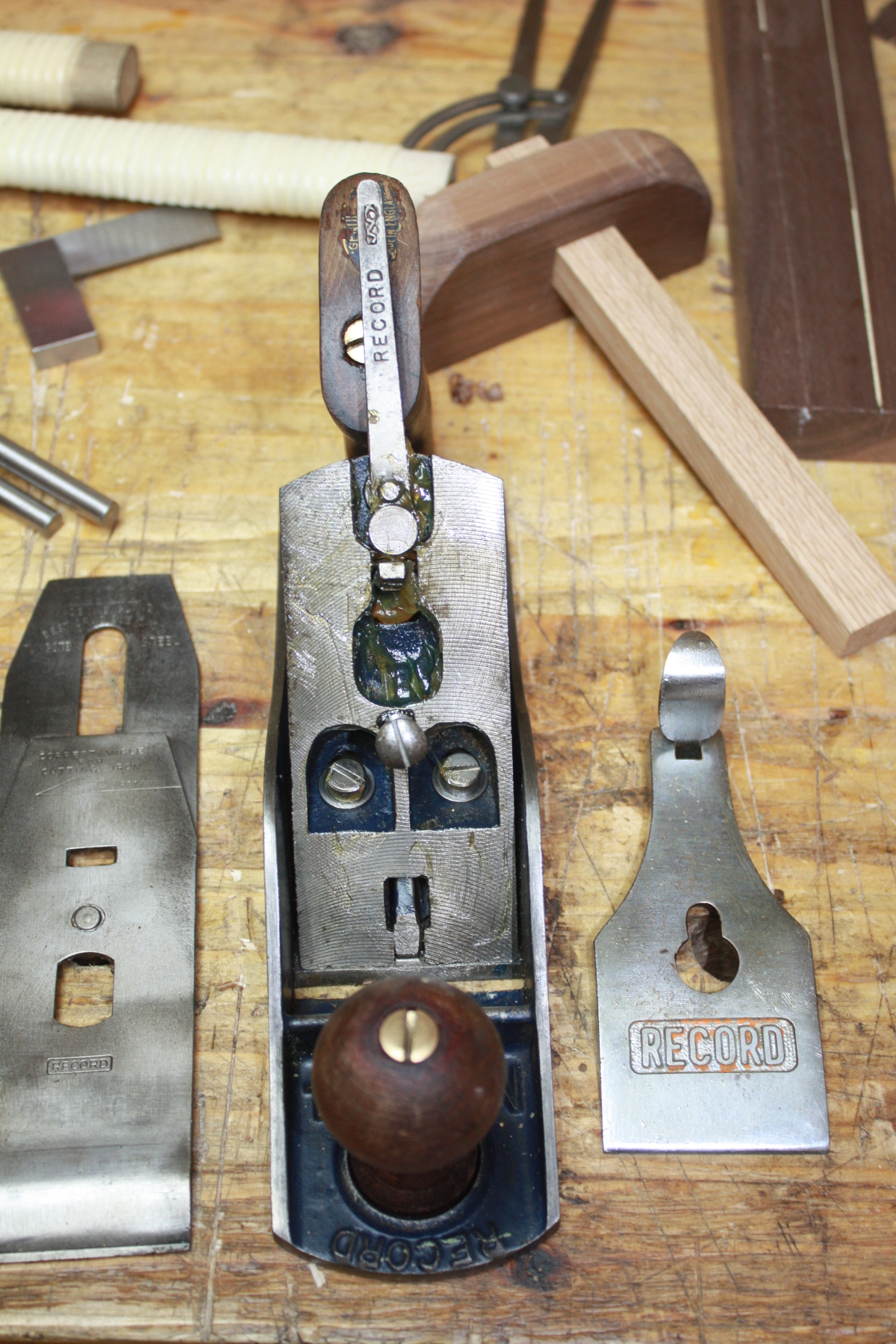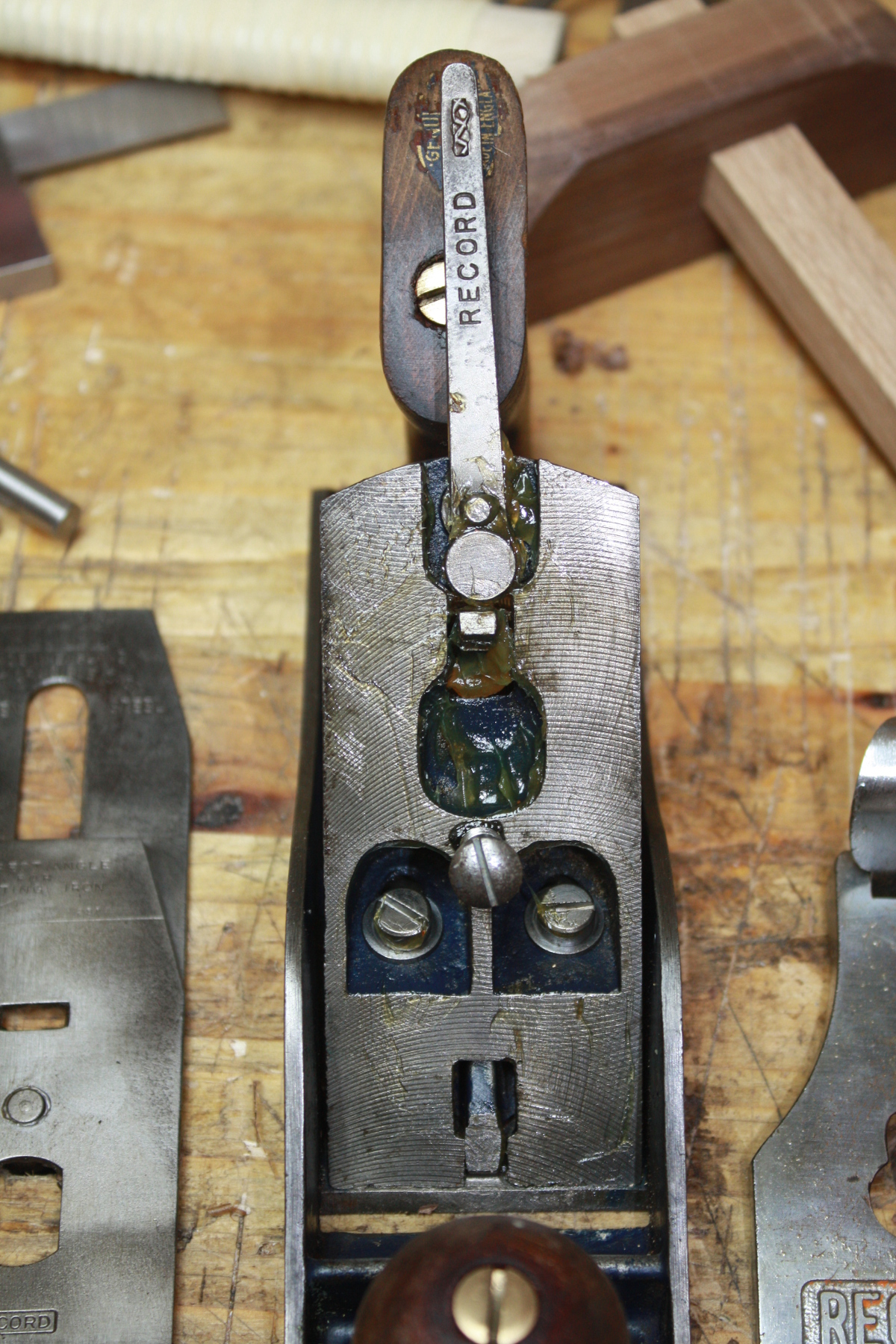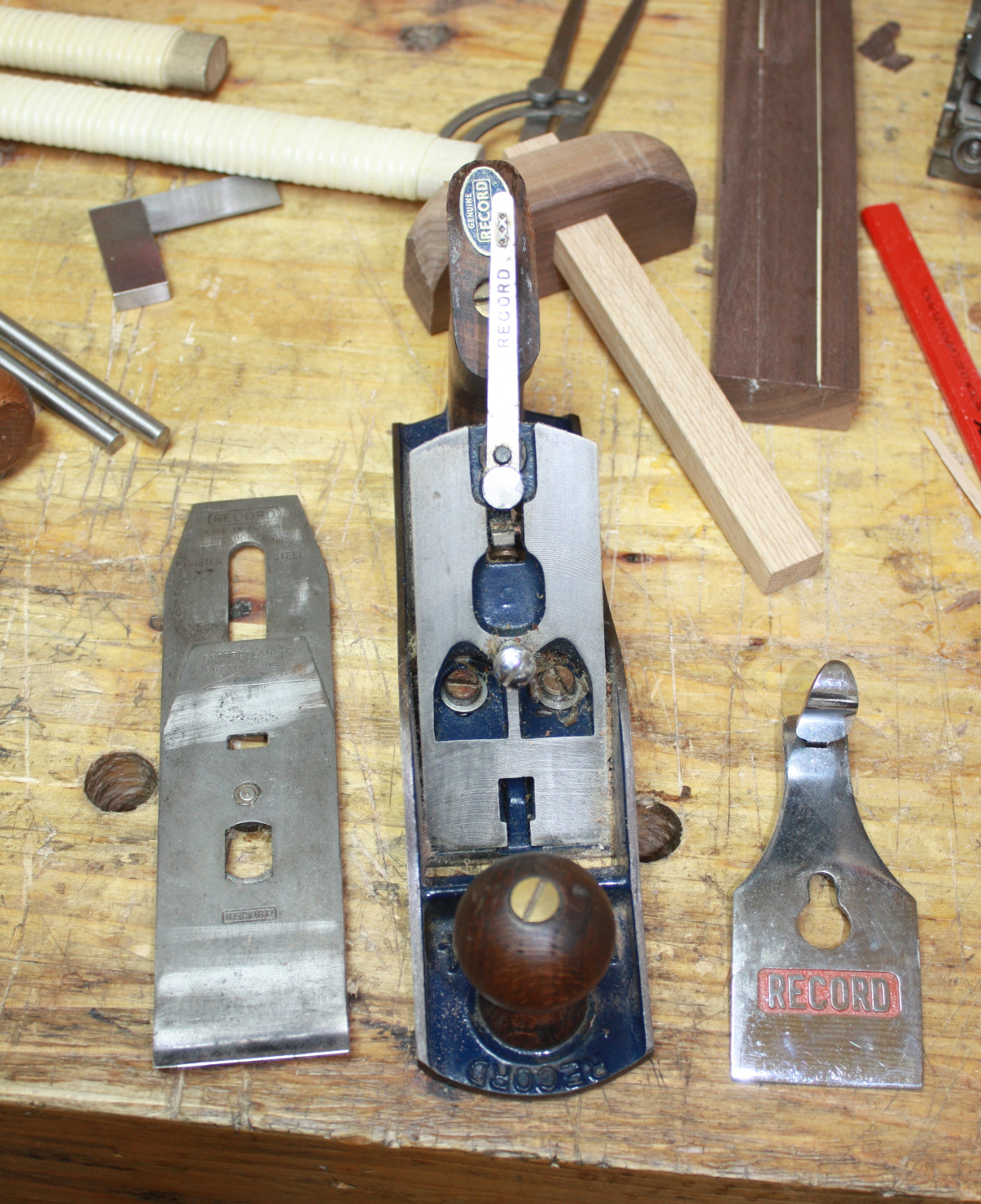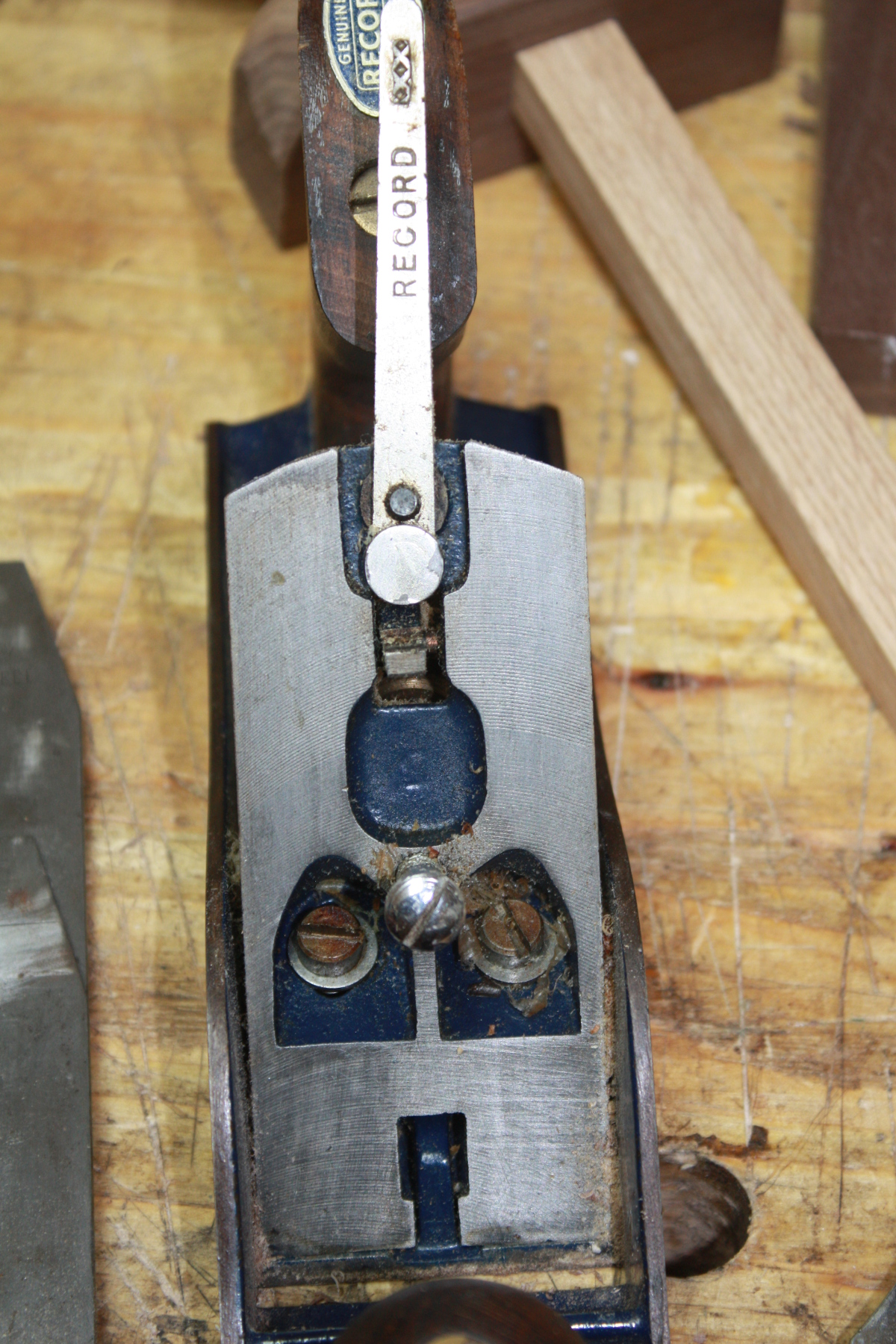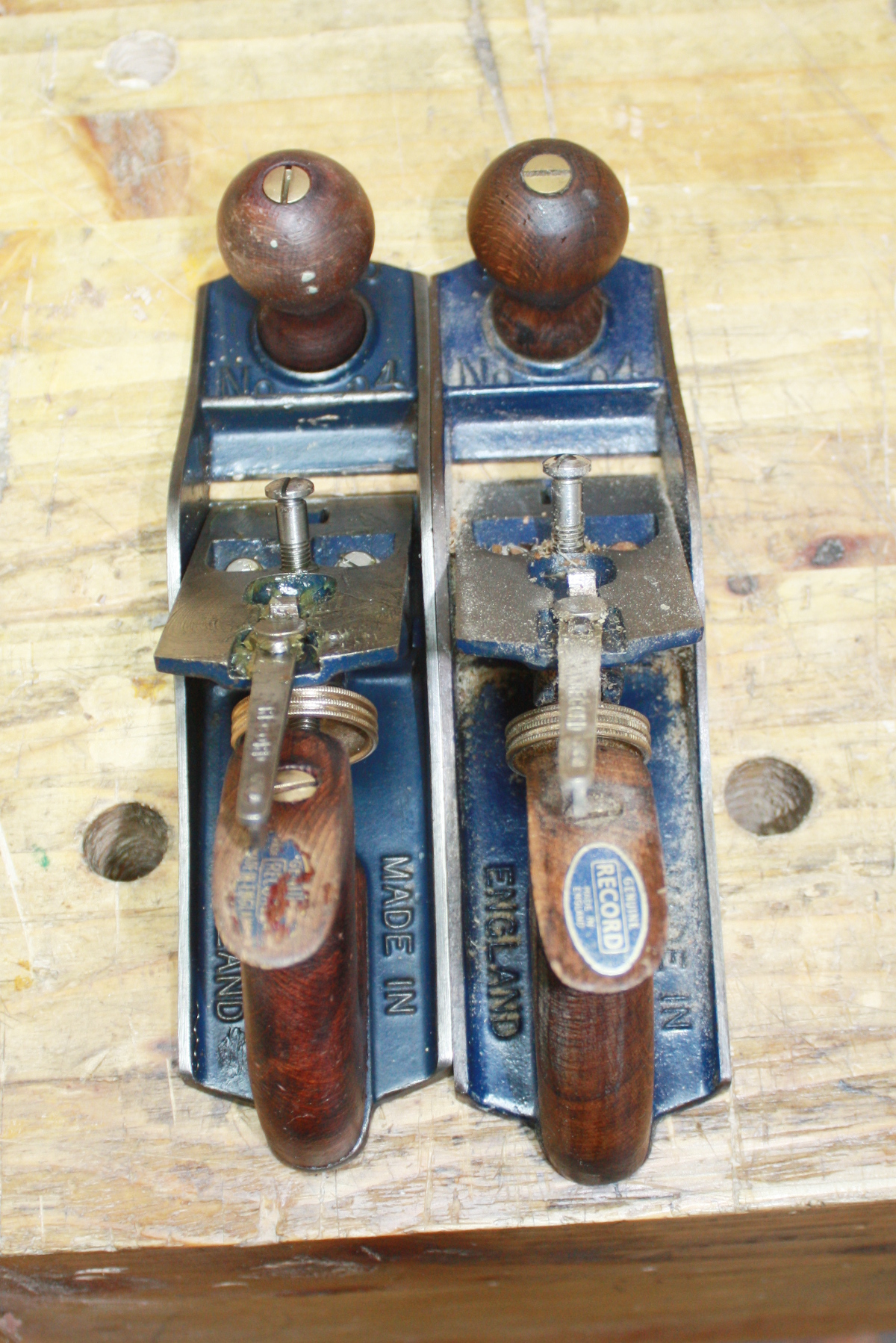MarkDennehy
Established Member
So, my scrub plane is the cheapest AmTech #4 I could find, with the mouth filed wider and the blade ground with a massive camber and it works pretty well except that the casting digs into my hand until it bleeds, which is less than optimal.
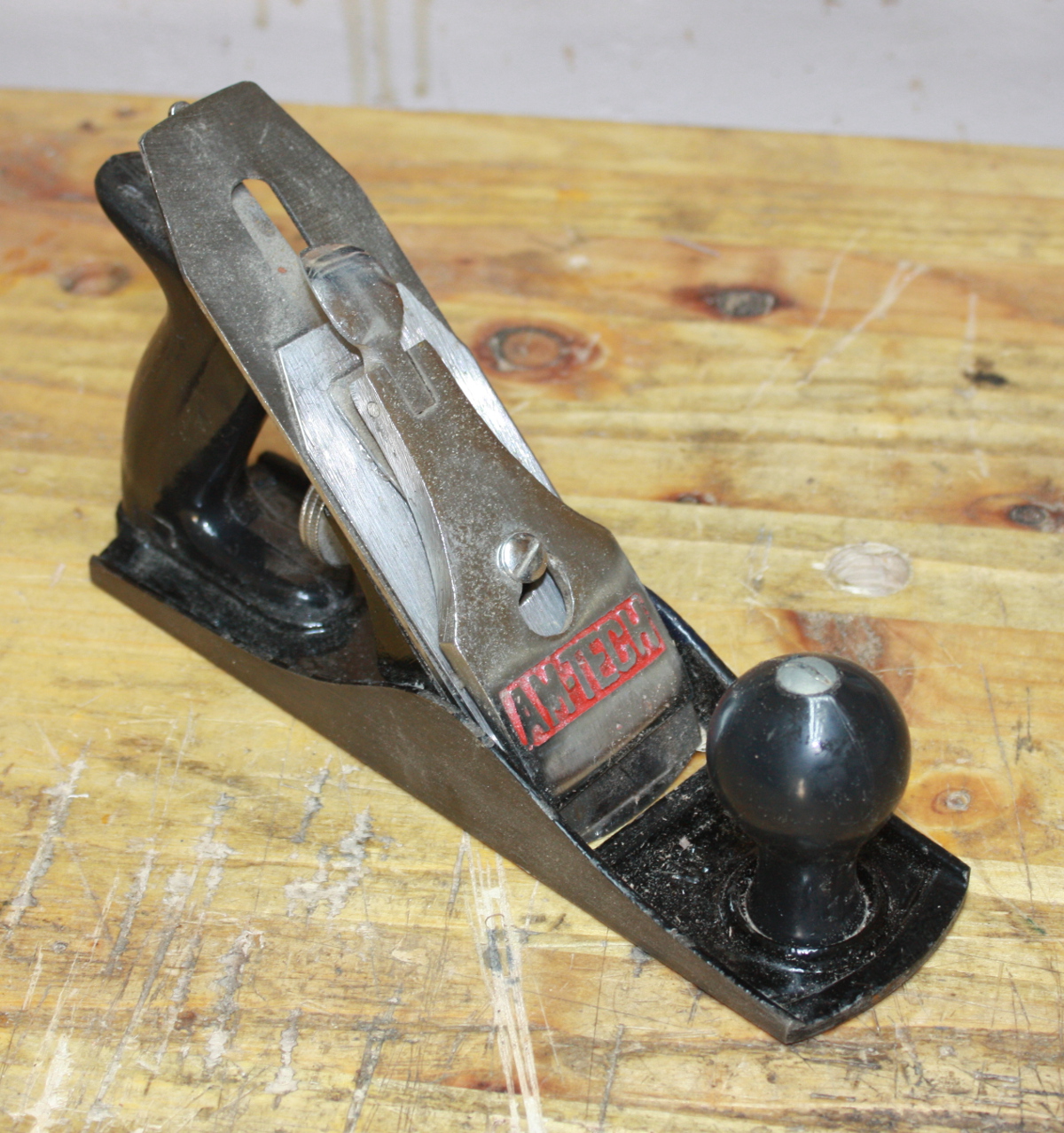
So I bought another Record #04 figuring it'd fit better. And it was cheap enough (about 20 quid by the time I'd paid postage to Ireland). But...
...now I don't know which of my two Record #04s is the older and better one
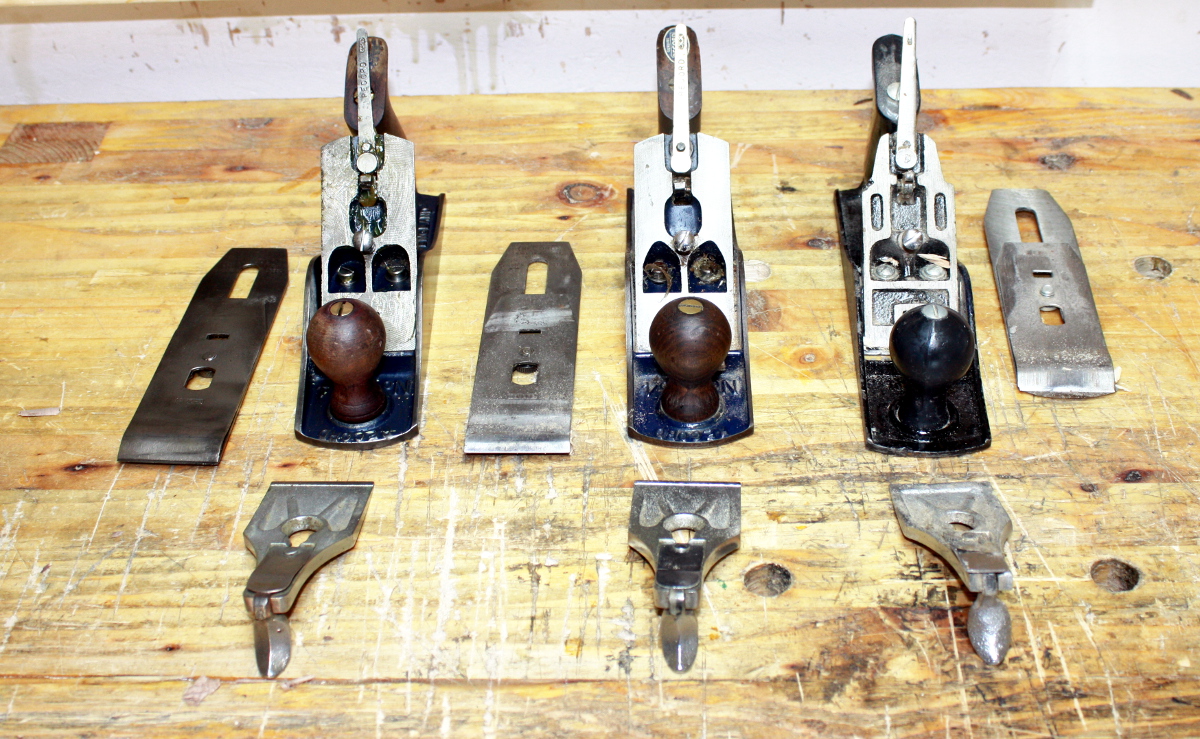
I mean, I thought they were the same vintage from the iron shape and the solid frog design, but looking at it now I'm confused by the shape of the cutouts for the frog-securing screws. I thought there was only the one solid frog design and after that, they all went to that design where only some raised surfaces were in contact with the iron, but these seem to have a different design?
Anyone got any ideas as to which is older?

So I bought another Record #04 figuring it'd fit better. And it was cheap enough (about 20 quid by the time I'd paid postage to Ireland). But...
...now I don't know which of my two Record #04s is the older and better one

I mean, I thought they were the same vintage from the iron shape and the solid frog design, but looking at it now I'm confused by the shape of the cutouts for the frog-securing screws. I thought there was only the one solid frog design and after that, they all went to that design where only some raised surfaces were in contact with the iron, but these seem to have a different design?
Anyone got any ideas as to which is older?



